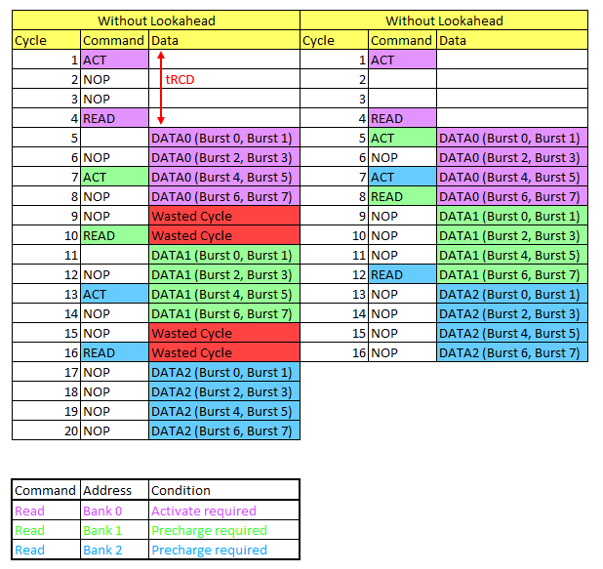External Memory Interfaces Intel® Agilex™ FPGA IP User Guide
A newer version of this document is available. Customers should click here to go to the newest version.
10.4.10. Command Reordering
DDR protocols are naturally inefficient, because commands are fetched and processed sequentially. The DDRx command and DQ bus are not fully utilized as few potential cycles are wasted and degrading the efficiency
The command reordering feature, or look-ahead bank management feature, allows the controller to issue bank management commands early based on incoming patterns, so that when the command reaches the memory interface, the desired page in memory is already open.
The command cycles during the tRCD period are idle and the bank-management commands are issued to next access banks. When the controller is serving the next command, the bank is already precharged. The command queue look-ahead depth is configurable from 1-16, to specify how many read or write requests the look-ahead bank management logic examines. With the look-ahead command queue, if consecutive write or read requests are to a sequential address with same row, same bank, and column incremental by 1, the controller merges the write or read requests at the memory transaction into a single burst.

Compare the following efficiency results for the above figure:
| Without Look-ahead Bank Management |
With Look-ahead Bank Management |
|
|---|---|---|
| Active cycles of data transfer |
12 |
12 |
| Total number of cycles |
20 |
16 |
| Approximate efficiency |
60% |
75% |
In the above table, the use of look-ahead bank management increases efficiency by 15%. The bank look-ahead pattern verifies that the system is able to completely hide the bank precharge and activation for specific sequences in which the minimum number of page-open transactions are placed between transactions to closed pages to allow bank look-ahead to occur just in time for the closed pages. An optimal system would completely hide bank activation and precharge performance penalties for the bank look-ahead traffic pattern and achieve 100% efficiency, ignoring refresh.